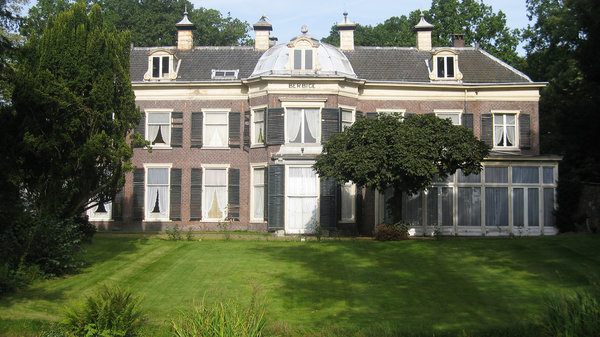The leading role played by the wealthy citizens of the Dutch Republic is still visible to this day in the form of a green belt of country estates. They were developed alongside canals, strategic highways and trading routes by patrician families, PhD researcher Gerdy Verschuure-Stuip discovered. This is the origin of the country estates landscapes that still exist in and around Dutch cities.
At the ‘Berbice’ country estate at Voorschoten there was reason to celebrate in 1696. In that year, cloth merchant Pieter de la Court van der Voort (1664-1739) succeeded in growing a pineapple in his new orangery. It was a unique achievement at a time when knowledge of botany was still in its infancy. The gardening enthusiast wrote a book about his estate and his experiments with tropical plants that would provide inspiration for many an 18th-century landowner. Prominent citizens like to show off with the country estates that they built outside the cities. “Elsewhere in Europe, the nobility were living in castles or palaces, but it was wealthy citizens who called all the shots in the Republic”, explains Verschuure. “A country estate was a perfect way of showcasing their power, wealth and hospitality. They began to behave a little like nobility.”
Patrician families used their country mansions with beautifully landscaped gardens for all kinds of leisure activities. Whenever the opportunity arose, poet and statesman Jacob Cats would rush to ‘Zorgvliet’ – now ‘Catshuis’, the official residence of the Dutch prime minister, – to enjoy his garden and take a stroll in the dunes. Constantijn Huygens would write countless poems at his country estate ‘Hofwijck’, designed according to the model of harmony devised by Vitruvius. At other country estates, such as Clingendael, there were not only carp ponds, but even farms. Hunting finches was also a popular pastime.
In her PhD research, ‘Well situated: Analysis of Dutch country estates in their landscapes (1630-1730)’ (Welgelegen, Analyse van Hollandse buitenplaatsen in hun landschappen (1630-1730)), Verschuure charts all the nearly 400 country estates that are said to have existed at the end of the 17th century in what is now the provinces of North and South Holland. Some of them still exist to this day, partly in the form of city parks or green areas. She used a dot distribution map featuring all the country estates in the region and arguments from historical treatises and courtly poems to search for the underlying structures. Where did prominent citizens build their exclusive pleasure gardens? The distribution map shows that country estates were often arranged in groups, particularly along trading routes, canals and strategic highways – the roads between two cities. “But why did they choose these locations? Because developing a country estate was to some extent about ‘seeing and being seen’”, says Verschuure. It partly explains why the country estates tended to be located around busy traffic routes near cities such as Amsterdam, Haarlem and The Hague. More detailed analysis reveals that there are also large concentrations to be found next to reclaimed land, such as De Beemster, and particularly on the edges (slopes) of the dunes of the North Sea coast.
In the Batavian and French period, many country estates were changed as a result of political shifts (‘Freedom, Equality, Fraternity’). Later, urbanisation swallowed up some of these green oases, with the high cost of maintenance often a key factor.
Despite this, there are still ‘country estates landscapes’ in existence that were developed three centuries ago. They form the basis for part of the green park structures in and around Dutch cities. Highlighting their history and how they interrelate is important for conservation, including preserving the landscape elements related to them, argues Verschuure. “Based on that, I am calling for them to be given protected status.” In her view, identifying these places as ‘country estates landscapes’ opens up the opportunity for new country estates, to reinforce the historical green structure. Today’s wealthy citizens could also have an interest in raising their profiles by means of their own creation in the country – although the result could be very different from the classical English landscape style. Verschuure: “We need to pay more careful thought to our green structures – especially in times of climate change. Historical country estates landscapes can serve as our guide in this. If it results in new hybrid forms, that makes it all the more exciting.”

